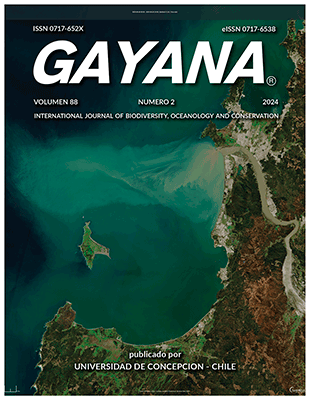Abstract
The rocky intertidal is a highly dynamic ecosystem, characterized by the presence of hard substrates exposed to both air and water due to the tidal cycle, which support a high diversity of organisms adapted to conditions of high environmental variability. At the national level, there are not many studies oriented to their characterization and, in the case of the Gulf of Arauco, the level of knowledge about the biodiversity of these ecosystems is particularly low. Between October 2021 and August 2022, three monitoring campaigns were carried out in order to study the richness, abundance and species composition of the rocky intertidal in seven sampling sites distributed along the coastline of the Gulf of Arauco. Our results revealed a taxonomic richness that reached 56 taxa, of which 31 were present during the three surveys. The groups with the highest species representation corresponded to mollusks, arthropods and red algae. Multivariate community structure analysis shown statistically significant spatial differences between sampling sites, but not between surveys. Spatial differences occurred between sites located in the eastern section of the gulf (Coronel to Laraquete) and sites located in the south-western section (Tubul to Punta Lavapié), with greater species richness and diversity observed at stations located in the eastern section of the Gulf. These results indicate the existence of a spatial pattern in the composition of hard bottom intertidal communities in the Gulf of Arauco, which shows consistency during the three surveys carried out.

This work is licensed under a Creative Commons Attribution-NonCommercial 4.0 International License.
Copyright (c) 2024 Aldo Hernández, Carlos Leal González, Oscar Inostroza-Michael, José Miguel Bogdanovich, Eduardo Hernández-Miranda, Marco Salamanca, Cristian Chandía

